#VR Game Development Studio
Explore tagged Tumblr posts
Text
Choosing a virtual reality (VR) development company involves several key considerations to ensure you find the right partner for your project. Here are steps to guide your selection process:
Define Your Project Requirements:
Determine your goals and objectives for the VR project.
Identify the target audience and the platforms (like Oculus, HTC Vive, etc.) you want to develop for
#VR Development Company#Best VR Development Agencies#Custom VR Solutions#Top VR Development Firms#VR Game Development#VR Simulation Development#Virtual Reality App Developers#VR Technology Providers#AR/VR Development Company#Immersive VR Experiences#VR Content Creation Companies#Affordable VR Development#VR Training Solutions#VR Platform Development#Custom VR Application Developers#Virtual Reality Development Expertise#VR Development for Enterprises#VR/AR Development Services#VR Project Development Agency#VR Game Development Studio
0 notes
Text
How to Outsource Game Art: A Complete Guide
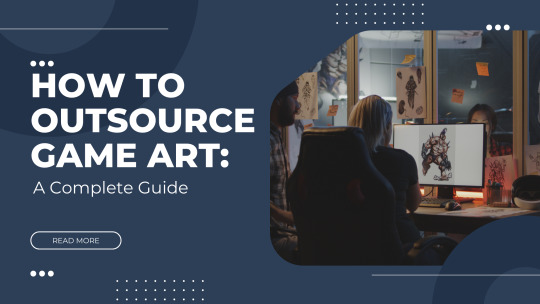
Outsourcing game art has become vital for game development companies aiming to enhance creativity, streamline production, and cut costs. By partnering with specialized art studios like Devstree Studio, game developers can scale production quickly, tap into diverse talent for high-quality visuals, and focus on core development. Outsourcing reduces the need for full-time hires and lengthy recruitment processes, allowing studios to access top-tier skills on demand. Key steps include defining art needs, researching reliable partners, and maintaining clear communication to ensure project success. With the right outsourcing team, companies can deliver polished games efficiently and cost-effectively.
#game development#html5 game#unity3d#unity game development#hire game developers#game developers#video games#devstree studio#ar games#vr games#augmented reality
1 note
·
View note
Text
The Transformational Power of AR and VR in Gaming
#ar#vr#development#game development#gaming studio#power of ar game#vr gaming#software development#ar game development#vr game development#vasundhara#vasundhara infotech
0 notes
Text
The weird and wonderful history of Kowloon as a digital interactive space - Part II
This article is the continuation of a previous post.

Any comprehensive history of 20th century Hong Kong is not complete without a chapter entirely dedicated to the architectural and urban planning puzzle that was Kowloon Walled City. Quite unlike any other slum in Asia or elsewhere in the world, the extreme conditions under which its inhabitants lived captured the attention of various international journalists and photographers whose reports of this accidental labyrinth, in turn, inspired some of the most remarkable artistic explorations of our time. In this regard, video games did not remain impervious to the powerfully stimulative imagery, as much a reference today as it was when its hardened concrete walls still stood tall.
Kowloon's Gate Suzaku VR - Jetman - 2017
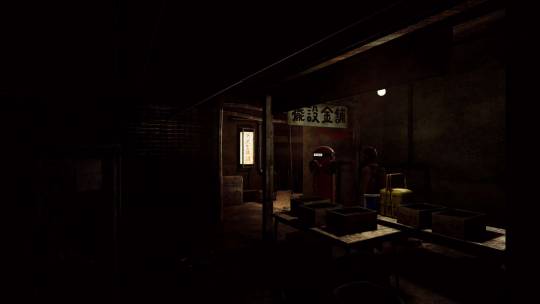
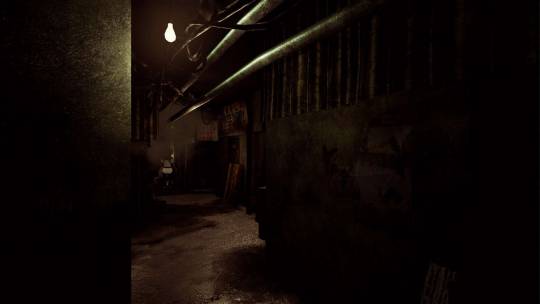
Kowloon's Gate made a most unexpected comeback twenty years after the original episode via the crowdfunded VR project Suzaku developed by Jetman, a studio founded by and composed almost exclusively of ex-SME/Zeque staff. While it is not the remaster many had hoped for, essentially consisting of a walking simulation through some redesigned locations from the original, it does a commendable job in faithfully replicating its instantly recognizable, light-starved alleyways in competent high-definition. It is also the only VR-compatible entry from this list, granting it a degree of uniqueness over its counterparts.
Stranglehold - Midway/Tiger Hill Productions - 2007
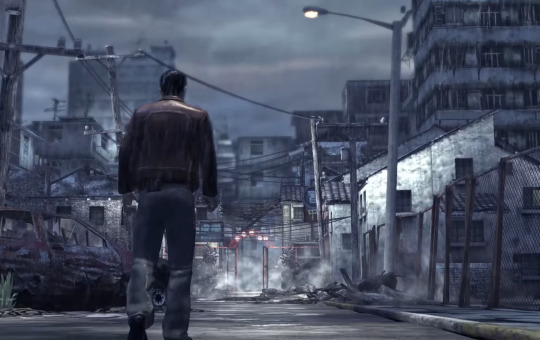
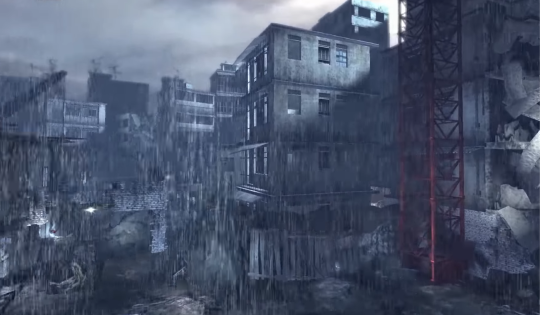
Stranglehold is the result of a collaboration with Hong Kong movie director John Woo, developed as a direct sequel to his heroic bloodshed classic Hard Boiled, featuring Chow Yun-fat in the role of detective 'Tequilla' Yuen in his unending confrontations with organized crime. One of the game's most unforgettable levels, Slums of Kowloon, takes place during a particularly rainy day, seemingly in those last days when the zone had been emptied of residents and demolition work was well underway. The visual representation of the quarter is suitably evocative, its buildings in complete state of disrepair, the remnants of local businesses or places of prayer still discernible from under the piles of steel and cement rubble.
Resident Evil 6 - Capcom - 2012
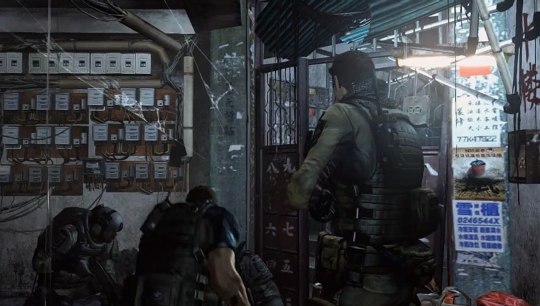
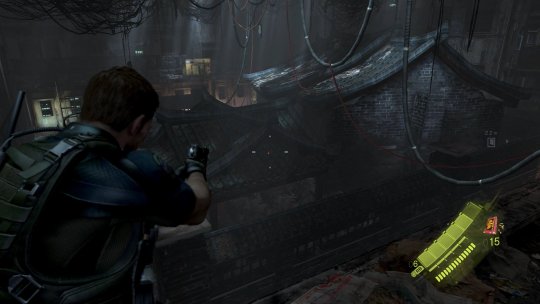
For all its shortcomings, Resident Evil 6 partly succeeds in taking the first two episodes' concept of parallel storylines and realizing it to a much fuller extent. Its choice of different characters translates into entirely different campaigns, locations and playing styles. The very first scene in Chris/Piers' campaign occurs in the fictional Chinese city of Lanshiang, modelled after real-life Hong Kong. The mayhem in the main streets forces the player to take a detour into a location named Poisawan, which bears a striking resemblance to the Kowloon district. Though an unofficial representation, it is among the most skilled replications of the scenery we find in the vast photographic repository of the area. The degree of minutiae with which the district's haphazard electric installation is replicated, alone, suffices to demonstrate a true commitment to authenticity.
Paranormal HK - Ghostpie Studio - 2020


Few would dispute that Kowloon is, itself, naturally conducive to sentiments of dread and anxiety. Paranormal HK is a 2020 made in China production reviving the defunct neighbourhood in a gripping, blood-curdling contemporary ghost story. The player is the cameraman of a paranormal-themed TV show exploring the zone during the evening of the Zhongyuan festival, a scheme suspiciously akin to that of Akira Ueda's 2004 game, Michigan: Report From Hell. As a result of the thorough research work performed by its creators, as well as the impeccable usage of contemporary 3D graphics techniques to achieve accurate lighting conditions, players may momentarily experience the feeling of walking into a photo of the actual city as it existed in the mid eighties.
Sifu - Sloclap - 2022
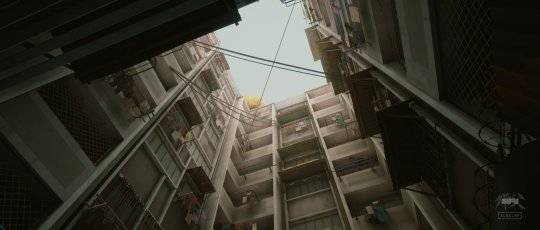
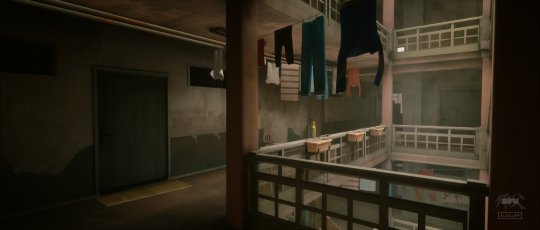

Notwithstanding of its renaissance during the 128-Bit era, the beat 'em up genre is commonly associated with the arcade games of the late 80s and 90s, the period of time when it flourished and, arguably, reached its zenith. The simplicity of controls and ease of access sufficed to attract players to the arcade cabinet, while the frequently extreme levels of difficulty of advanced levels ensured a steady flow of cash for arcade room owners and game development companies alike. Nevertheless, the genre has but perished and, in many aspects, recent years have indeed elevated it to unforeseeable degrees of complexity. Sifu, by Sloclap, synthesizes the elation of digital hand to hand combat simulation with the real-life complexity of mastering a martial art.
As is the case of previous entries in this list, Sifu makes no admitted reference to Kowloon or Hong Kong. However, the designers left little to the imagination in what pertains to their inspirations when taking on the task of constructing the game's environments. Another notable coincidence stems from the fact that this production was made possibly with the support from a celebrated independent game funding group going by the name Kowloon Nights.
Stray - BlueTwelve Studio - 2022


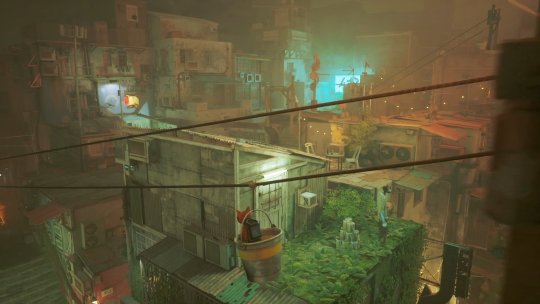
Stray is one of the most revered independent video games in recent memory, and justifiably so. The long development process yielded many benefits, judging from the consistency and attention to detail that engrossed many an avid player. That the main character is singularly charming feline may have played an equally crucial role. The creators have made no effort to conceal the fact that the notorious Hong Kong district was a pivotal influence to the design of its nameless city. The first indication can be spotted in the game's earliest footage, in which a black cat traverses a street where a particularly conspicuous sign boasted the initials HK. Stray is less concerned with presenting a precise replica of Kowloon than it is about summoning the very essence of its atmosphere. Moreover, in an exquisitely poignant way, its ending lends an entirely new meaning to the term walled city. In the future, robots may well take the place of humans. Invariably, the Walled City is no more. Slitterhead - Bokeh Game Studio - Work in Progress


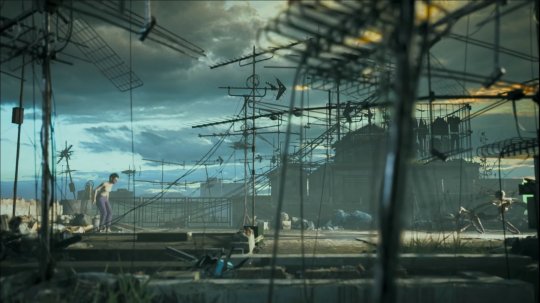
An sequence of unconscionable mistakes from the part of Sony Computer Entertainment's management galvanized Keiichiro Toyama to part ways with Japan Studio, as it once was, and establish his own game production label. Their debut title, Slitterhead, is described as a grotesque survival horror experience, a genre within which the author moves with matchless ease. Among the few certainties regarding this project is the fact that it will take place prominently - if not exclusively - within the Kowloon City province. A wide variety of aspects included in the preview footage leave the viewer optimistic as to this being one of the most accomplished portrayals of the district ever seen in a video game. Subtle yet telling signs already demonstrate the creator's in-depth knowledge of the quarter's architecture and history. Take, for instance, the suggestive image of the airplane flying mere meters above the top of the buildings. Although the growth of Kowloon was for the most part ungoverned, buildings did not rise above a certain height, even as inhabitants claimed for increased availability of space. This is due to the fact that airplanes landing at the nearby airport would be required to make their descent at relatively low altitude, performing a tight curve as they soared just above the enclave, thus preventing construction from expanding upwards. Another scene shows a child playing on the rooftops of the buildings, which once again is consistent with the documented habits of residents who, starved for sunlight and open space elsewhere within the city limits, had little alternative than to take the stairs all the way to the top.
Warehouse Kawasaki Arcade
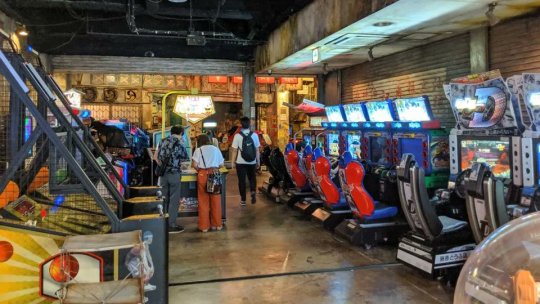

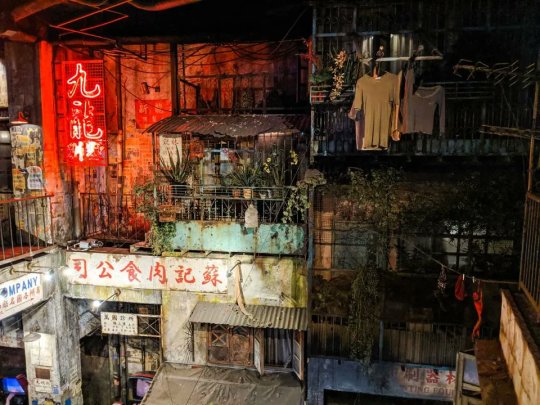
I would be remiss not to make some form of allusion to Warehouse Kawasaki, an arcade built to replicate the Walled City with unthinkable detail. Though its ultimate purpose was for visitors to engage in digital entertainment, the venue was scrupulously put together. Point in fact, many of the objects used in the construction of the five floor amusement centre were imported directly from Hong Kong. Like so many other Japanese arcades, it closed its doors in 2019.
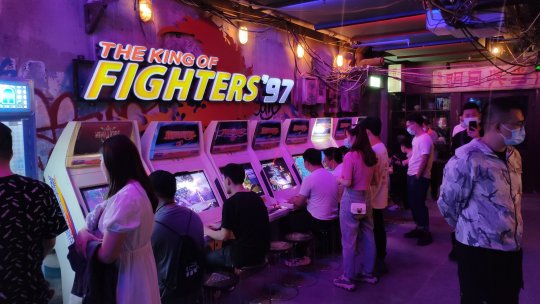
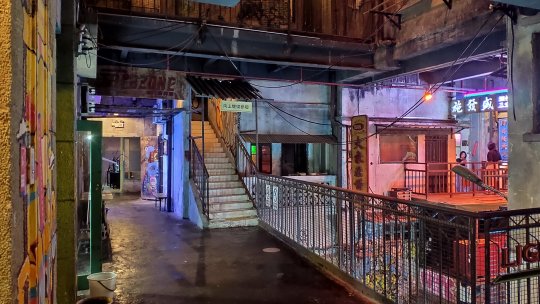
In recent years, a rather similar initiative was taken by the Chinese in their attempts to build unique mall spaces. The 文和友 malls in mainland China, found in Changsha, Guangzhou and Shenzhen, attempt to reproduce the walled city aesthetic. Local residents inform me that these are increasingly lacking in foot traffic, for which reason the majority of their stores are closed. Other digital replicas of Kowloon
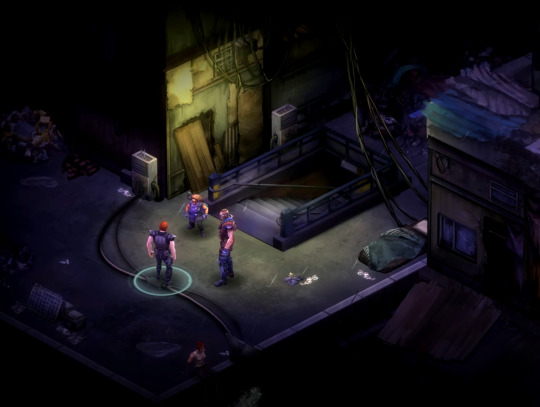
A number of other videogames set in or deriving inspiration from Kowloon could not be featured in this article. A frequently cited reference in this context is the action/adventure game Fear Effect, one which I emphatically dispute. No doubt remains as to it being located in a futuristic version of Hong Kong, yet I could discern no parallels with the walled city, save for those scattered second-hand visual motifs that were no doubt imported from sci-fi classics such as Blade Runner or Ghost in the Shell.
The Utelek Complex stage of Deus Ex: Makind Divided presents a similar situation, where the overall atmosphere of the futuristic favela bears some resemblance to Kowloon, without meeting the specificity quota that would warrant a more comprehensive exploration.
The 2004 Shout! original Kowloon High-School Chronicle for the PS2 is a unique case, in that it borrows the city's name despite taking place in a massive, Tokyo underground dungeon that is later revealed to be a maze-like Egyptian pyramid. The odd choice of title remains unclear. Shadowrun: Hong Kong game (screenshot above) contains a very direct mention of Kowloon as the place in which an entire episode comes to pass. Another project still in development, Kowloon's Curse (screenshot below), is following the lead of many popular independent horror games in recent memory by using a visual design and structure that elicits memories of the late Playstation/early Dreamcast era. A short prequel episode was made available earlier this year, for free.
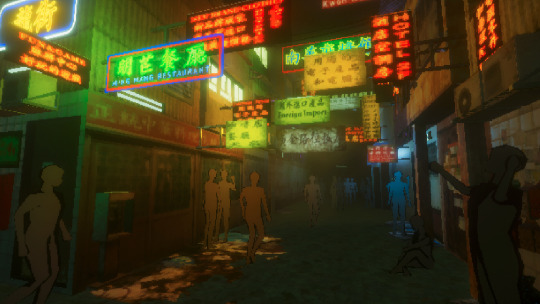
Additionally, I refrained from mentioning the Kowloon maps in Call of Duty: Black Ops or Counter-Strike: Global Offensive, as I perceive both games to be insufficiently relevant to merit study or contemplation.
A space that refuses to be forgotten
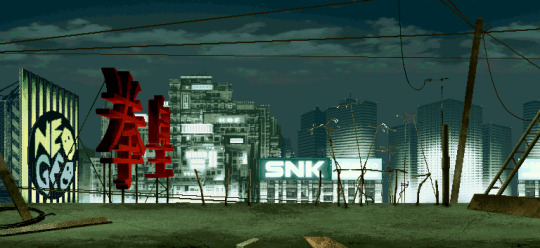
(China rooftop stage from The King of Fighters 2003)
It would be a gross overstatement to claim that Kowloon is a recurring location or level design motif in videogames. The relationship between digital games and the real life ghetto has been one of sporadic references. What makes the subject so engrossing pertains to the quality of the relationship, particularly that of a small cadre from among the titles featured in this article. Kowloon's Gate was one of the most relevant game creations of the 32-Bit era, a game deserving of reverence and cult following inside and outside Japan. Likewise, Shenmue II is the second instalment of a truly ground-breaking and highly advertised series whose production costs alone were unmatched until quite recently.
Moreover, this is an affair that is far from concluded. The unexpectedly high number of allusions to Kowloon in videogames released or revealed just last yet demonstrates that its aesthetic is still very much present in the minds and hearts of artists and designers working in the field. The walled city lives on as a digital demarcation that is certain to resurface time and again in years to come.
#kowloon's gate#kowloon's gate VR suzaku#jetman#stranglehold#john woo#kowloon walled city#hong kong#resident evil 6#poisawan#paranormal hk#ghostpie studio#sifu#kowloon nights#stray#slitterhead#bokeh game studio#keiichiro toyama#Warehouse Kawasaki#arcade#文和友
217 notes
·
View notes
Note
What’s your short auto bio?
How did you learn the game making stuff? How do you have time/money? How did you find your style?
oh yeag sure i can give u a lil summary
i wanted to be a game developer my entire life after getting an n64 with zelda and mario when i was like 7 years old
that lead to me taking an experimental 3d course in high school that used blender cuz they had no budget and just used a free program (lucky me that blender eventually turned into the juggernaut that it is now). They didn't have any game design classes but i sated my curiosity by playing games with heavy customization like halo forge and little big planet
in college i took a game design class that introduced me to the Unreal Development Kit (what came before Unreal 4) and, while the classes didn't really teach me much just having access to the engine is what really sparked my drive to start a career in the games industry
few years later I got into the industry during the 'vr is the future lets open up 104599034 game dev studios this bubble totally wont burst' craze of the early - mid 2010's and quickly climbed the ladder due to my skills. on my free time i finished my first self-published game Arcus and released it.
but of course the bubble burst and i got laid off (this coincidentally(?) happened at the same time i came out as trans. lol.) After that I stuck to working indie as, surprise surprise, crunch was a thing at my big industry job. I worked at a few studios for a couple of years, during which bloodborne psx (my second self published indie game) was developed and released on my free time.
all my indie jobs ended with being let go due to the reality of indie development having worse job security. i decided to stop doing "professional" work altogether and became the self publishing indie solo dev that you see today 💙
356 notes
·
View notes
Note




Recently I was looking up on wiki someone about fnaf help wanted and during that I was immediately reminded of one thing: the in universe game development studio Silver Parasol games (the company responsible for creating the in universe VR game Freddy Fazbear Virtual Experience) and when looking that up I saw that their logo has a white rabbit mascot, we know that Vanessa used to work at silver parasol before glitchtrap infected her mind and developed the Vanny persona and even in the curse of dreadbear DLC theirs a Vanny mask, seeing how the VANNI mask unit is something that all fazbear Class V Technicians use is it possible that before Vanessa and before glitchtrap that Vanny started out as just a simple mascot character.
Actually, Vanessa didn't ever work at Silver Parasol, that was Tape Girl, who mentions that development was moving to a different studio or smth soon. Vanessa was always a Fazbear employee as far as we can tell. It's a neat idea though!
#fnaf#five nights at freddy's#vanessa fnaf#fnaf vanessa#vanny fnaf#glitchtrap#tape girl#help wanted fnaf#fnaf help wanted#help wanted#answered asks
48 notes
·
View notes
Note
Do you agree with the TheGamer's article, Astro Bot Isn't A Celebration, It's A Graveyard?
I have not read the article or played the game, but watching talk about Astro Bot and how it's this "great celebration of Playstation" is absolutely a bummer. Watching Astro Bot get Spike's net and run around catching monkeys in an Ape Escape level feels more like a cry for help than a celebration of anything.
It's Team Asobi saying, "Hey remember when they used to let us create weird, wacky, super creative games? Well they consolidated like eight teams down to just this Astrobot group here, so this is a toast to our fallen comrades."
I'm sure that, to Sony, doing that "made sense," because games like Locoroco or The Last Guardian or Gravity Rush were not hitting the right "sales targets." (A made up number that doesn't mean anything to anyone other than shareholders) So, you restructure, you filter out all but the best and brightest talent, and that's how you get Team Asobi.
But I've been saying it for a while, and so have a lot of other people, that we're back to the same kind of egotistical Sony that launched the PS3 to the sound of dead weight hitting the pavement. Now, that Sony turned the PS3 around towards the end, but that's because they got humbled by the Xbox 360 and had to figure out a way to bounce back.
And then they bounced back right as Microsoft's ego started to humble them and it launched the Playstation 4 into such a huge lead that they're still kind of coasting on that, particularly because instead of bouncing back, Microsoft has just kind of rolled over and accepted their fate. Whatever success they have with Game Pass isn't good enough for them to really swing back at Sony very hard.
So we get this clownshoes company that closes down all of their Japan studios, that launches a VR headset peripheral that's more expensive than the console it's made for, and that same VR headset has no backwards compatibility with older PS4 software even though the console itself does, and then they launch an equally expensive wifi-only remote dock (read: a Wii U Gamepad) for that console, they keep raising their prices in Japan, they launch and then two weeks later shut down a live service game that spent 8 years in development...
And then you look at Astro Bot, brimming with "Remember when Playstation used to be the coolest thing in the world?" references, from Parappa the Rapper to Ape Escape to Shadow of the Colossus, and it's like... yeah, I do remember that, and I can only remember it, because that's not the kind of company Sony is now. This is a party primarily for things that don't exist anymore.
You could call that a graveyard, sure. It's a wake at the very least.
27 notes
·
View notes
Note
Pretend I'm using my disventure camp sideblog. What is your opinion on the zombie episode from season 1? (I want to talk to someone about it SO bad)
First off, I have a reaction post of this episode you can see:
Suffice to say, I was basically just going "WTF" the entire time XD
Despite me not really being a fan of zombie apocalypse stories, I said this in that post:
I mean if you know me, you know I like death game stories...
But surprisingly, I don't actually like zombie apocalypse stories. It's not just my cup of tea.
Because zombie apocalypse stories are just so bloody hopeless and there's absolutely no way out of inevitable fate. It's just "This is hell, wait till it's your turn to die."
And I just naturally find that less compelling than stuff like Hunger Games, Squid Game, and Danganronpa, where there IS a possibility to escape your fate, even if it's really small.
With these kinds of stories, I'm just waiting for everyone to die. So I get less attached.
That's just my opinion.
I think it's a REALLY fun and unique challenge idea, especially using VR for this. If Chris McLean had access to VR, he would TOTALLY do this to the campers and not tell them they're in VR just to screw with their heads.
But I also think this challenge is VERY rushed in pacing. With the time cards and everything. And this isn't Total Drama with big studio rules, so they could've absolutely made the episode, like, maybe five minutes longer to fix the issue.
It probably further established my reaction.
But for what we did see, it was really cool of a challenge idea. Which is something I prefer this show does instead of sticking to the Total Drama status quo. Like, even if this show doesn't handle every plotline well, I can at least respect them trying something new, even if the execution is lacking.
The highlights for me in the episode were actually the moment outside the challenge, such as Fiore sharing her story and advice to Grett and Alec, Grett getting development and finding her place with her villain found family, even if they betrayed her. Queen got a glorious elimination speech. (If you see my tier list post on DC1 characters, you'll know I love Grett. I said she was my... third favorite in that, I think? Next to Gabby and Jake)
Miriam getting development was also really nice. She apologized to Ellie for her cold nature earlier. (I mean, AT THE TIME, Ellie hadn't done anything to deserve that) And her declaring Jake as the grandson she never had was... EVERYTHING to me. OMG...
Oh yeah we also got Tom's face reveal and his... horrifically sounding backstory about getting kidnapped and tortured. It really brought his character full circle to making me understand him and really like him as a character, and making him giving Jake the cold shoulder previously that much more understandable.
Oh yeah there was also a kiss between them... or something... pfft, I don't care, I don't ship them what are you talking about I don't care about love in these shows, I wasn't broken or anything hahahahaha...
So yeah, I hope this show gets another VR Challenge in the future. Doesn't look like Season 2 is gonna get one unfortunately. (On Episode 11 at the time of this answer) You can do a lot of things in VR that you can't in real life (in show real life, obviously).
#disventure camp#disventure camp grett#disventure camp miriam#disventure camp fiore#disventure camp tom#disventure camp jake
11 notes
·
View notes
Text
Article: '13 developers share the video games that helped them fall in love with gaming'
We asked the devs who are helping to shape the future of gaming what made them fall in love with playing them in the first place
Excerpt:
"Dragon Age: Inquisition Anna Hollinrake Creative director, Electric Saint Anna Hollinrake is the co-founder and creative director at Electric Saint, a new independent studio striving to make ambitious and heartfelt experiences. Anna previously served as art lead on Fall Guys, and worked as an artist and art director on Lola and the Giant and Arca's Path VR. "Graduating from my Game Art course in 2014 I wasn't exactly disillusioned, but I was distant from the medium I'd gone to university to study. I had lost a bit of joyful games enthusiasm, until deep into my post-university malaise a beacon appeared: Dragon Age: Inquisition. My first BioWare game (don't ask me how I missed the others, I don't know), I had no idea what the Chantry or Templars were, but a combination of stubbornness and hype pushed me forward." "Two things made me fall back in love with games again. The first: community. Playing Dragon Age: Inquisition alongside others, and having that sense of parallel discovery, let me share my obsessions joyfully – and fall into a glorious pit of fandom on Tumblr. The tarot cards were a huge artistic inspiration for a generation of artists, and we shared our own versions featuring our player characters relentlessly." "The second: actual romance. Inquisition was my first experience with a game that had legitimate smooching in it, and I realized there was a hugely underexplored area of games that we'd barely scratched the surface of. The potential! The drama!! And yes, I was basic, but my emotional support Cullen kept me going until I got my first industry job."
[source and full article]
34 notes
·
View notes
Text
As the metaverse continues to evolve, the demand for high-quality, engaging content has never been greater. This virtual universe is not just about immersive experiences; it’s also about the narratives, interactions, and creativity that bring those experiences to life. In India, one company stands out as a leader in this space: Simulanis Solutions. As a premier Metaverse Content Creation Company, Simulanis is dedicated to crafting compelling content that captivates users and enhances their journey through the metaverse.
#Metaverse Content Development#Metaverse Game Development#Virtual Reality Metaverse Content#Augmented Reality Metaverse Solutions#3D Metaverse Design#Immersive Metaverse Experiences#Metaverse App Development#Metaverse Animation Studio#Metaverse Platform Creation#Custom Metaverse Environments#Metaverse Virtual World Design#Metaverse Content Creation Agency#Metaverse Real Estate Development#Metaverse Architecture Services#Interactive Metaverse Solutions#Metaverse Digital Twins#Metaverse Experience Designers#NFT and Metaverse Content#Metaverse VR/AR Integration#Metaverse Integration Services
0 notes
Text
TADC Theory - The Tape Recorder
A few months ago, I (re)watched the trailer before the next episode was due to drop. And something has really intrigued me since the first time I laid eyes on it:
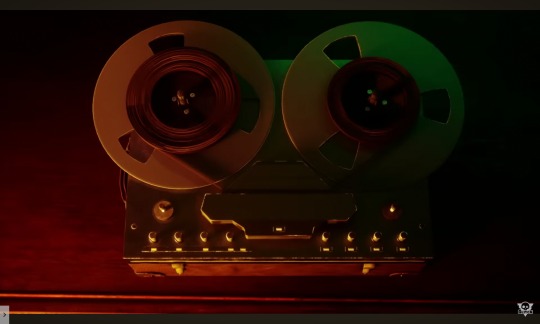
Or atleast, what I think is a tape recorder. But let's assume it is for now
When I think of tape recorders in games, I usually think of either Bendy or FNaF: Help Wanted. In both games, the tape recorders are used to give us players the lore of problems going on within the in-lore companies of both games. And since the circus is implied many times to be an old 90s game, I've been thinking:
Could these tape recorders be hidden messages from the dev of the in-world game?
Some of you may know about Shipwrecked 64, the only ARG about a video game that you can actually play as an actual game. There are plenty of hidden tapes you can find as you go further down to discover more of the game's secrets, but I won't say anymore for those who are still discovering them.
In FNaF: Help Wanted, the tape recorders were hidden by a beta tester who knew something was up during development, while in the games of the Bendy franchise, the recorders weren't hidden, but they definitely gave us a whole soup-full of lore about what was going on at the in-world cartoon studio.
One thing I want to note that judging by the atmosphere of the room around the tape, this is during the haunted mansion episode with the little ghost and the teal glowing lady. So either it's part of the adventure, or we may finally get a little bit of backstory behind the mysterious C&A.
Not many people might remember this, but in the pilot, there was a logo that showed up as Pomni was running through the hallways of the (unfortunately fake) exit.

I myself and a few others have a theory that C&A this is the company that created the game that TADC is. But the real questions are how it became a digital prison, and how did a mere VR headset bring those poor unfortunate souls inside?
I guess we'll have to wait and see.
But anyway, that's all I have for now! If you guys would like to hear more theories from me, just let me know! And hey, whoever spots all the references I slipped into this post gets a cookie and a hug!
Take care everyone and have a great day, afternoon, or night, where ever you are. And remember: stay weird, and God bless you.
20 notes
·
View notes
Text
miscellaneous things i think could be good (or just funny) in a modern freakazoid reboot
dexter has a small friend group he plays dnd and other games with (because help him, this boy needs some legitimate friends)
more of dexter and freakazoid interacting with each other, being able to see how their internal communication works. bonus if freak can just. pop up on dexter's computer or phone to chat with him
a new villain or plot device based on generative ai, messing with freakazoid's sense of what's true and false (possibly deadpan? the early villain in the s1 finale?)
an episode on just how exactly to do a freakazoid reboot. freak himself is in the studio trying to find the best pitch to turn into a show, and even in the writing room, telling people that no, actually, he'd never say that, have you even SEEN the original show --
a whole episode's running joke of being sponsored by an mmorpg (with 20% off if the viewer uses the code RPGFREAK20XX). freak goes after the game's creators near the episode's end when he gets sick of the interruptions
valerie returns with a bit of a larger role, being steph's friend and possibly becoming the previously cut-from-production witch girl (because we need more women in this show)
short joke of freakazoid stopping a fight to tell someone who's playing a video loudly without headphones to stop it, it is DRIVING him UP the WALL. GEEZ
fanboy makes a return, and introduces his little sister: a freakazoid fan who's a little too into him and her favorite fandom ships. freak wants nothing to do with her, her brother, and her "intense interest with cargo and freighters"
cobra queen has an online shop where she makes snake-themed jewelry and does makeup tutorials. freakazoid is happy to support small businesses. he is not happy when she still uses her massive pet serpents to break into stores to steal things
gutierrez, with the internet taking off, also deals in developing software at apex. the new social media app they make leeches info from others to sell, but its main use is to find, tag, and track freakazoid wherever he goes
one of the villain's plans involve those fridges that come with a touchscreen and built-in wifi. imagine their surprise when freak is able to zap inside. he's on one of the shelves eating food and asking for condiments
an episode where lobe's scheme is based on one of those viral, seemingly silly mobile games everyone plays (flappy bird, candy crush, cookie clicker, etc). even the show's staff are taken with it. the narrator interrupts the program at one point to mention that he will no longer be announcing things because he's too busy playing the game himself
freakazoid learns about vr being a thing, and becomes a cryptid by popping into random games and streams. there's a whole short done like a found footage film or documentary based on people's attempt to find him
freak does a parody of youtuber apology videos for a segment, saying sorry to the viewer. by the end, it's clear he's badly reading off a script, and admits he doesn't even know what he's apologizing for
cave guy's plan for an episode being intimidating various scholars, professors, and newspapers to hide articles and research behind a paywall (which goes directly to him, of course). freak learns about it because dexter needs to write a paper for class, and needs to race against the clock to get his sources unlocked before its due
a short based on dexter trying his hand at streaming games. he ends up temporarily famous for his really well-done "custom freakazoid vtuber model" (it's just freak himself)
a short based on longhorn trying to get into nashville by becoming a music influencer. he does not get far
you-know-who has happily settled into his role as an internet creepypasta. there's an episode where freakazoid needs to follow a string of disappearances, linked with a recent internet "challenge" and posts trailing off after saying candlejack, which is harder than it s --
#freakazoid#freakazoid series#freakazoid!#cocoapost#ever since i finished watching the show i have had. ideas#i'd love to see a modern reboot with how the internet is nowadays#is it likely? maybe not#but i can DREAM DARN IT ALL#anyways if y'all have thoughts i would love to hear them
16 notes
·
View notes
Text
reinstalling windows on my computer. i tried to make linux work and it was genuinely alright for a while, but just like I guessed- the amount of incompatible things grew and grew until I was so damn annoyed by it all I just gave up.
game dev? 2-3 working ones.
music making? just a couple working softwares that I wanted to use.
vr? would have been a day long troubleshooting nightmare to make work.
modding games? good luck pal.
just... ugh. linux is trying to hard to make it all work out but the unfortunate reality is that if developers arent trying then you're just not gonna have software that works properly. dont even get me started on a software having a linux version... but it only works on ubuntu.
i guess if nothing else this was a valuable learning experience and if we all do end up getting to drop windows at some point I'll be much more prepared. for now, im headed back into windows and putting 200 mods on skyrim, and using fl studio, and downloading unreal engine, and I'm gonna play half life alyx on my vr headset again.
8 notes
·
View notes
Note
Since Skyrim has done so well that Bethesda gave it multiple rereleases, why not make new content for the game? By that, I mean dlc in the vein of Dawngaurd and Dragonborn.
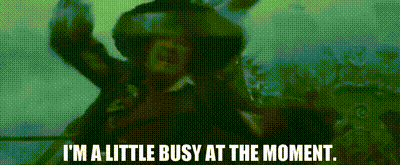
It's because the dev team is busy working on Elder Scrolls VI. Ports to other platforms like that are often handled by external contractor studios and not by the original dev team. Skyrim is no exception - Escalation Studios did the Skyrim VR port and Iron Galaxy did the Skyrim Switch port. The Elder Scrolls dev team is deep into developing the next game.
[Join us on Discord] and/or [Support us on Patreon]
Got a burning question you want answered?
Short questions: Ask a Game Dev on Twitter
Long questions: Ask a Game Dev on Tumblr
Frequent Questions: The FAQ
53 notes
·
View notes
Text
The Dawn of the Orange Economy in India-Col Rajyavardhan Rathore

Unleashing India’s Creative Potential
India stands at the cusp of an economic revolution — one driven not by traditional industries, but by creativity, culture, and innovation. Colonel Rajyavardhan Rathore, a visionary leader and former Union Minister, has been a vocal advocate for India’s Orange Economy — a term coined by the Inter-American Development Bank to describe the economic potential of arts, culture, and creative industries.
In this blog, we explore Rathore’s vision for India’s Orange Economy, its immense potential, and how it can transform the nation’s economic and cultural landscape.
What is the Orange Economy?
The Orange Economy refers to the economic value generated from cultural and creative industries, including:
🎭 Performing & Visual Arts — Theatre, dance, music, painting, sculpture 📽️ Film & Entertainment — Bollywood, regional cinema, OTT platforms 📚 Publishing & Literature — Books, digital content, storytelling 🎨 Design & Fashion — Handicrafts, textiles, branding 🎮 Gaming & Digital Media — Animation, VFX, e-sports 🏛️ Cultural Heritage & Tourism — Museums, festivals, heritage sites
This sector thrives on human creativity, intellectual property, and cultural capital — resources that India possesses in abundance.
Rajyavardhan Rathore’s Vision for India’s Orange Economy
As a leader who has championed youth empowerment and digital innovation, Rathore recognizes that India’s soft power — its art, music, films, and traditions — can be a global economic force.
Key Pillars of His Vision:
1. “Create in India, for the World”
India must position itself as a global content hub, leveraging its storytelling traditions (Mahabharata, Panchatantra) and modern digital platforms.
Example: “RRR” and “The Elephant Whisperers” winning global acclaim prove India’s creative prowess.
2. Policy Support & Infrastructure
Govt. initiatives like “Creative India” and “Startup India” must integrate creative industries.
Incentives for film shoots, animation studios, and cultural startups to boost employment.
3. Monetizing Cultural Heritage
India’s 50+ UNESCO heritage sites and 8,000+ festivals can drive tourism and creative exports.
Example: “Incredible India” campaigns blending tradition with digital storytelling.
4. Tech Meets Creativity
AI, blockchain, and VR can revolutionize art restoration, virtual museums, and gaming.
Example: “Digital Ramayana” projects and metaverse cultural experiences.
Why India’s Orange Economy Will Thrive
✅ Demographic Dividend — 65% of India is under 35, a youthful, creative workforce. ✅ Untapped Potential — Only 3% of global creative trade comes from India (vs. 40% from US/EU). ✅ Global Demand — Yoga, Ayurveda, Bollywood, and Indian literature have worldwide appeal.
Challenges & The Way Forward
While opportunities are vast, India must address: 🔹 Lack of formal structure for artists & freelancers. 🔹 Copyright & piracy issues hurting creators. 🔹 Funding gaps for independent filmmakers, musicians.
Rathore’s Solutions:
National Creative Policy to protect artists’ rights.
Creative Entrepreneurship Funds for startups.
Skill Development in digital arts, animation, and cultural management.
Conclusion: A New Dawn for India
Rajyavardhan Rathore’s push for the Orange Economy aligns with India’s rise as a Vishwaguru — a global leader in culture and creativity. By investing in this sector, India can:
Generate millions of jobs.
Boost tourism & exports.
Strengthen soft power diplomacy.
The future is orange, and India is ready to shine.
#OrangeEconomy #CreativeIndia #RajyavardhanRathore #VocalForLocal #MakeInIndia
Call to Action
Artists/Creators: Share your work with #OrangeEconomy!
Policymakers: Support creative entrepreneurship.
Youth: Explore careers in gaming, design, and digital arts!
Let’s make India the world’s creative superpower! 🚀🎨
4 notes
·
View notes
Text
Dota 2 (2013)
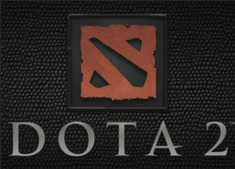
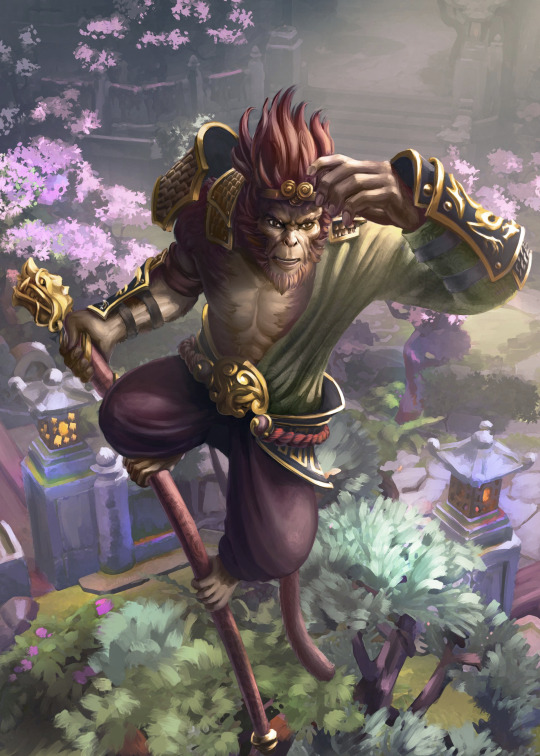
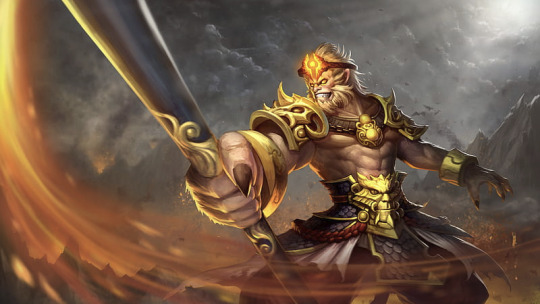
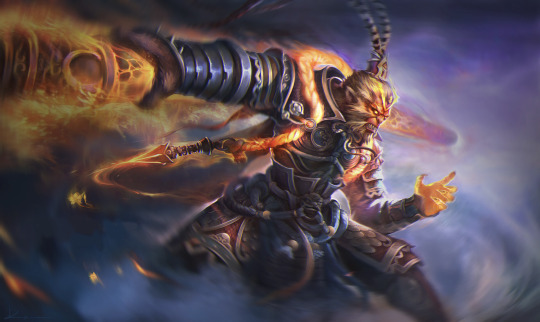
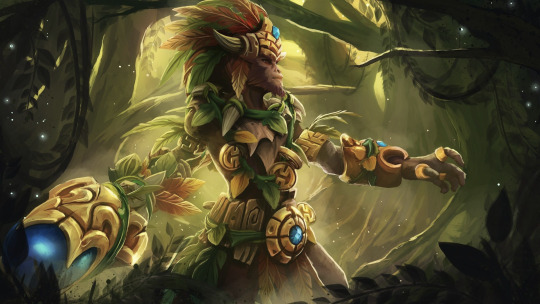
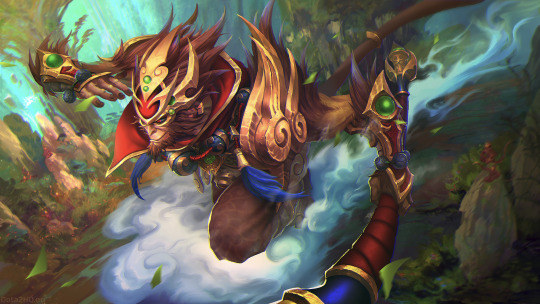

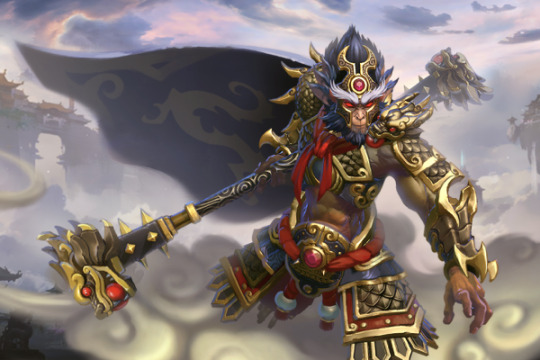

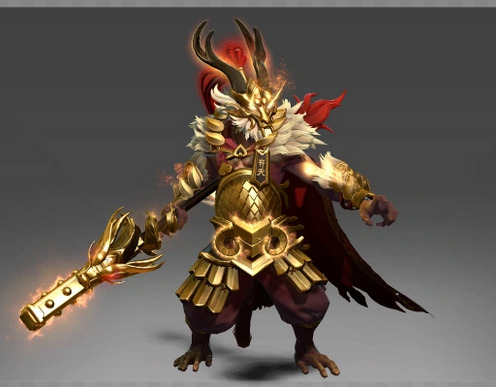
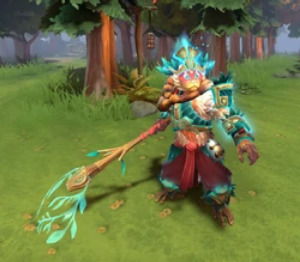
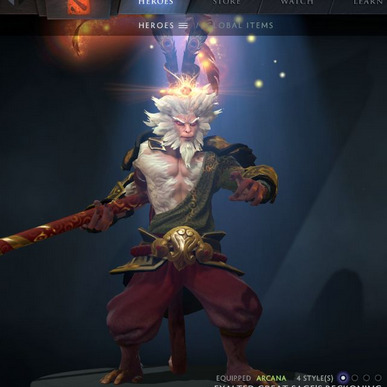

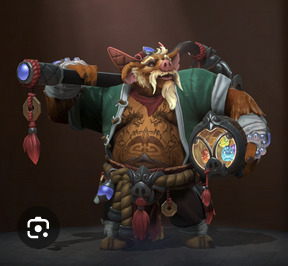

Date: July 9, 2013 Platform: Mac / PC / Linux Developer: Valve Corporation Publisher: Valve Corporation / Nexon Corporation / Perfect World Entertainment Genre: MOBA Theme: Fantasy Franchises: Dota Also known as: Defense of the Ancients 2 Type: Crossover
Summary:
Dota 2 is a free-to-play high fantasy action real-time strategy game developed and released digitally by Valve for the PC, Mac and Linux on July 9, 2013.
Built on the studio's Source engine, Dota 2 is the official sequel to Defense of the Ancients, a series of custom scenarios for the 2002 game Warcraft III: Reign of Chaos that originally popularized the "Multiplayer Online Battle Arena" sub-genre. Development of the game is led by the original mod's final lead designer, IceFrog.
Similar to the original mod, the main gameplay pits two five-player teams (the Radiant and the Dire) against each-other as they work to escort their three endless waves of AI-controlled monsters (or "creeps") to the fortified enemy base in order to destroy the enemy "Ancient". Each player controls an individual Hero character and, throughout the match, earn experience (to level up their stats and abilities) and gold (for purchasing items and equipment) by eliminating enemies.
Rather than using a weekly free-to-play character rotation system (similar to other MOBA games at the time, namely League of Legends), the game makes all characters playable from the start and features cosmetic microtransactions (such as alternate appearances for each Hero's armor and weapons, alternate announcers, and custom UI enhancements) using the Steam Inventory and Steam Market systems.
The game received numerous updates since its original release, adding new Heroes, game modes (including support for custom modes), and features while revising certain gameplay mechanics. New features include better support for both new players (with integrated community-made guide support, coaching, and improved training modes) and competitive players (with improved replay and spectator support), as well as VR headset support (for spectating and viewing cosmetics). It also received a reworked client update in June 2015 (named "Dota 2 Reborn" for a short time), porting the game to Valve's Source 2 engine (the first game released with it), and received a complete map revamp on April 2023.
Dota 2 originally received an invite-only beta in November 2011, during Gamescom 2011. It was formally launched July 9, 2013, but access was gated via a queue system until December 16, 2013. It was also distributed as a standalone game in some regions, with Perfect World publishing the game in China, and Nexon publishing the game in both Japan and South Korea. The game also received spin-offs, including the 2018 digital card game Artifact, the 2020 "auto-battler" game Dota Underlords, and the 2021 animated series Dota: Dragon's Blood.
Source: https://www.giantbomb.com/dota-2/3030-32887/
Link: https://www.youtube.com/watch?v=LqtkfCLjJz4&ab_channel=DotaCinema
#Dota 2#Defense of the Ancients 2#jttw media#game#video game#crossover#sun wukong cameo#sun wukong#six eared macaque#liuer mihou cameo#six eared macaque camero#zhu bajie
22 notes
·
View notes